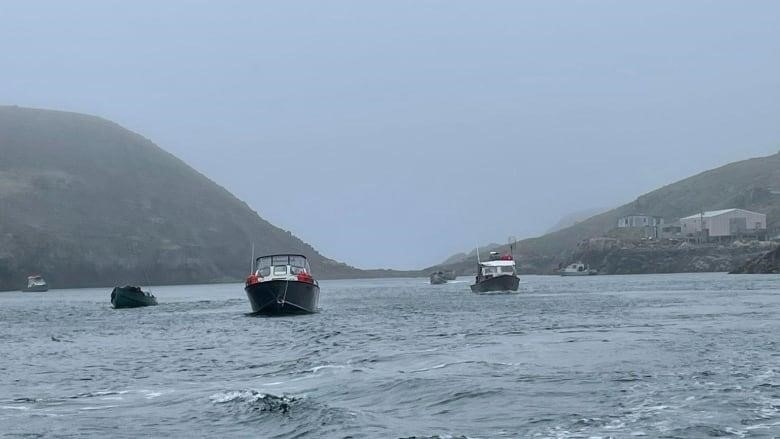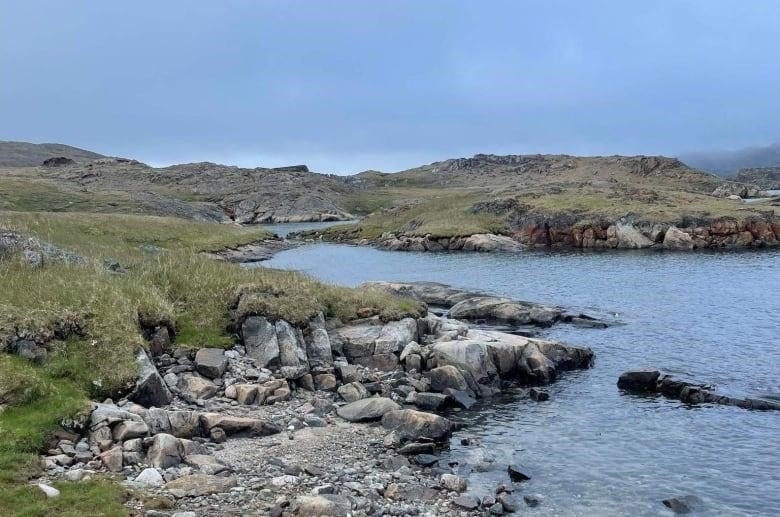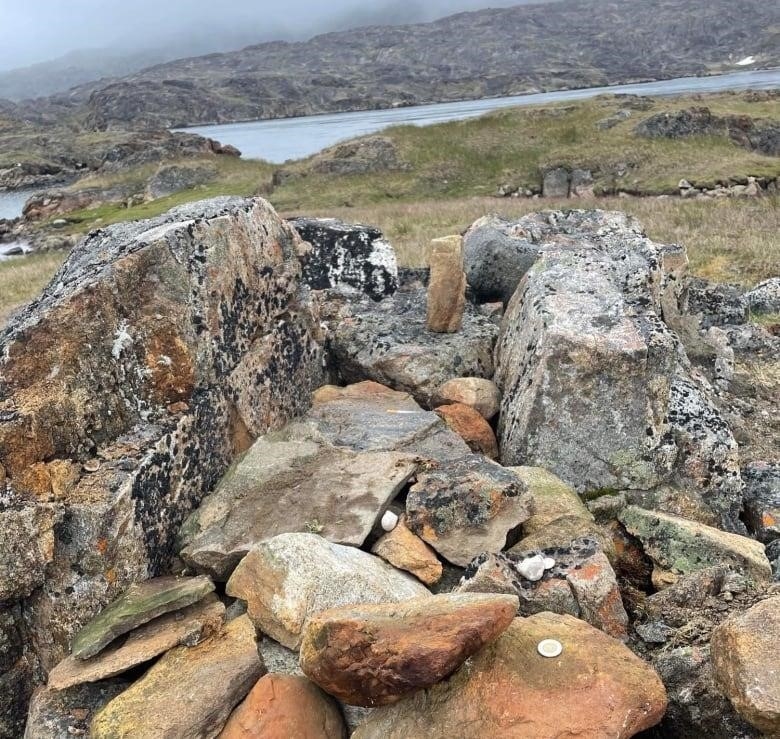
“We have no choice but to go on,” says the organizer about the incident that sent 2 people to the hospital
On July 25, about 10 boats left a foggy Kangiqsualujjuaq to go on a three-day trip that was sure to be exciting.
A group from the Inuit community on the northeastern side of Ungava Bay met with people from the Avataq Cultural Institute, a Nunavik group that works to keep language and culture alive.
They stocked their motor boats and canoes with food, camping gear, and other things they would need. But the most valuable thing they carried was the bones of four unknown people whose bodies were found decades ago on Killiniq island in Nunavut.
The team set out to rebury the remains that had been dug up by an archeologist in the 1930s for research and then brought back to the country. They had been kept at the Canadian Museum of History in Gatineau, Que., for many years.
Last year, Rhoda Kokiapik, who is in charge of the Avataq Cultural Institute, found out about the remains.
After working with museum staff for months, who finally agreed to pay for the repatriation process, Kokiapik got the bones in April and started making plans for the trip.
“It’s not natural for people’s bodies to be kept in a building,” said Kokiapik. “It’s very important that these bones, and any other bones, are put in the right place.”
But things didn’t go as well as they had hoped on the trip.
In the early hours of July 26, Maggie Emudluk, the mayor of Kangiqsualujjuaq, was asleep at home when a frantic phone call woke her up.
Two people had been attacked by a polar bear 140 kilometers northeast of them on the first night of their trip, and a town resident told her that she needed to organize a rescue mission.
“The person, who seemed to be in a panic, said, ‘Polar bears have attacked people going to Killiniq.'””I thought, ‘Oh my God,'” Emudluk said.
“It was a dad with his son and daughter.”
On their first night out, a polar bear attacked an older man and his daughter
Emudluk said that the three family members who were involved in the bear attack were the elder Kenny Assevak and his adult children, Siqua Baron and Ned Baron, who were on the trip because they were from Killiniq.
The family was sleeping in a tent on the night of the incident. Just after 2 a.m., the polar bear showed up. Emudluk says that the young polar bear first got to the father, then attacked the daughter, and then Ned Baron shot and killed the bear from close range.
Emudluk says that Ned Baron was not hurt, but that the father and daughter were seriously hurt and are getting better.
Emudluk says that the community moved fast.
“We sent the boat off at 4 a.m. It takes about two hours to get down, and we were able to get these people back to our community around 9:00 a.m.,” Emudluk said.
She says that the clinic flew the father and daughter to the hospital in Kuujjuaq, Nunavik, Que., because they both had serious cuts. She says that the elder was later treated in Montreal and is still getting better.
“Out there, it’s a wild country. “It’s a beautiful but very dangerous place,” Emudluk said, adding that the rest of the crew had to keep going.
“What they were trying to do had to be finished.”
Two people who were traveling to bring Inuit remains home were hurt by a polar bear:
Team forged o
Kokiapik was traveling ahead of his family with another group because of the thick fog. He didn’t find out about the news until the next morning when he heard it on the radio.
The team did not want this to be how the trip began.
“Oh boy, oh boy, I hope everyone is okay,” Kokiapik said he thought.
She told us, “We found out that they were saved.” “So that gave us a little peace of mind… We didn’t have a choice but to go on. We were a long way away.”

The boat ride to the island took about seven hours, and Kokiapik says that as soon as they got there, they began making plans for a proper burial.
Kokiapik had never been to the island before. She says that it used to be home to nomadic Inuit.
In the 1970s, when the Northwest Territories government shut down the island community, the people who lived there moved to other places. Kokiapik says that some people go back to the island often, but others haven’t been able to.
“People were happy,” Kokiapik said. “I know some people were glad to finally go back to where they grew up.”

Kokiapik says that the team gathered rocks and found a place near the water to bury the body. This was a proper way to end a trip that had been planned for over a year.
“It was so strange when I opened the box, which was wrapped in a special material that will break down over time,” Kokiapik said.
“After that, one of our older people led us in a short prayer… Everyone deserves to be able to sleep.”
